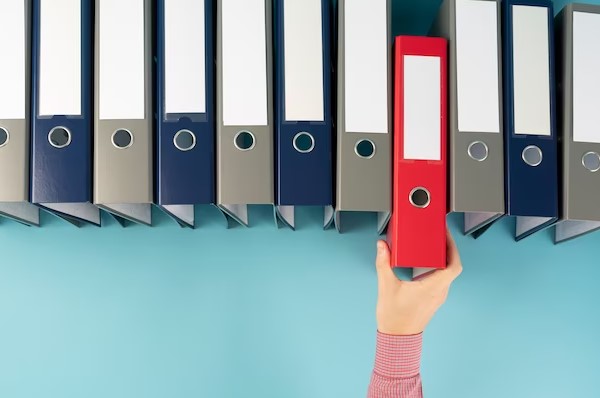Do you know where all your important paperwork is? Do you have many pieces of paper floating around in different places? Then, the chances of you losing something important are high.
Document organization is an important skill everyone should have. It’s not as tough as you think!
Check out a few easy tips to store all paperwork. Make sure you’re never searching too long for documents ever again.
1. Sort and Label Documents
The first step is to categorize and label your paperwork. Start by identifying broad categories. Sort financial records, legal documents, medical files, and personal correspondence.
Within each category, create subcategories to further streamline the process. Once you’ve established a clear categorization system, label your documents. Use clear, descriptive labels that accurately represent the contents of each file.
This will make it easier to locate specific documents when needed. This ensures that everything remains organized.
2. Invest in Proper Storage Solutions
Choosing the right storage solution is crucial. It preserves the integrity of your physical paperwork.
Invest in high-quality filing cabinets or storage boxes. They must be sturdy, durable, and resistant to moisture and pests.
Consider using acid-free folders and envelopes for important documents that need extra protection. Use plastic sleeves or sheet protectors to safeguard fragile or sensitive paperwork.
Remember to store your files in a secure and easily accessible location. Dedicate a filing area or cabinet to cut the risk of loss or damage.
3. Create a Document Organization Schedule
Maintaining an organized filing system requires regular attention and maintenance. Establish a file management schedule that suits your needs and stick to it.
Dedicate specific time intervals, such as monthly or quarterly. Review and update your documents. During these sessions, remove any outdated or irrelevant paperwork. Ensure that the new documents are properly categorized and labeled.
This proactive approach will prevent clutter from accumulating. It will make it easier to locate the documents you need when you need them.
4. Use Exhibit Stickers
Exhibit stickers are an excellent tool for document organization. You’ll see these, especially in professional settings such as law firms or courtrooms.
These self-adhesive labels are available in various colors. It can stick well to important documents. They show the significance or relevance of a document to a specific case or project.

By using exhibit stickers, you can quickly identify and retrieve specific files. You get rid of wasting valuable time searching through piles of paperwork.
Color-coding or numbering systems can further enhance the efficiency of your organization process. This enables you to prioritize and manage documents effectively.
5. Consider Digital Alternatives
While physical paperwork is still prevalent, it’s worth considering digital alternatives. They can further optimize your document organization. Scanning and digitizing important documents allows for easy storage, retrieval, and sharing.
Use appropriate file naming conventions. Create a clear folder structure when storing digital documents. Back up your digital files regularly to ensure their safety and accessibility.
Embrace digital solutions. This reduces physical clutter. It also provides remote access to your documents, increasing productivity and efficiency.
Explore These Document Organization Tips and Tricks
Implement these five tips for storing important paperwork. This will help you establish an efficient document organization system.
Remember to categorize and label documents. Invest in proper storage solutions. Create a file management schedule. Use exhibit stickers for easy identification. Also, consider digital alternatives. This will streamline your file management process.
Ensure that your important paperwork is always accessible and well-organized. Visit our website for more valuable tips and guides!




